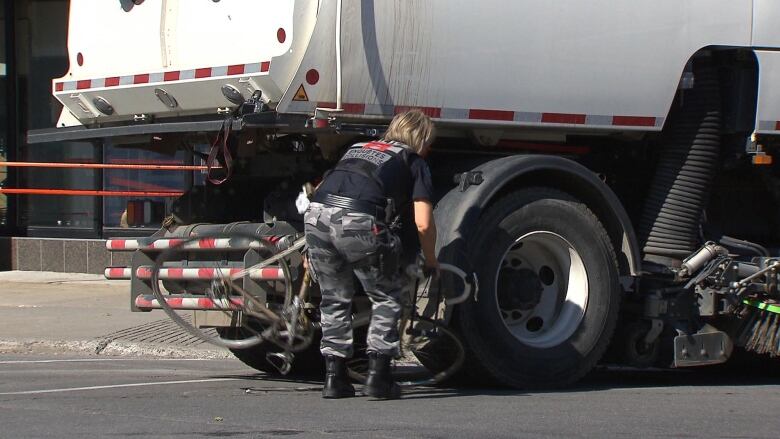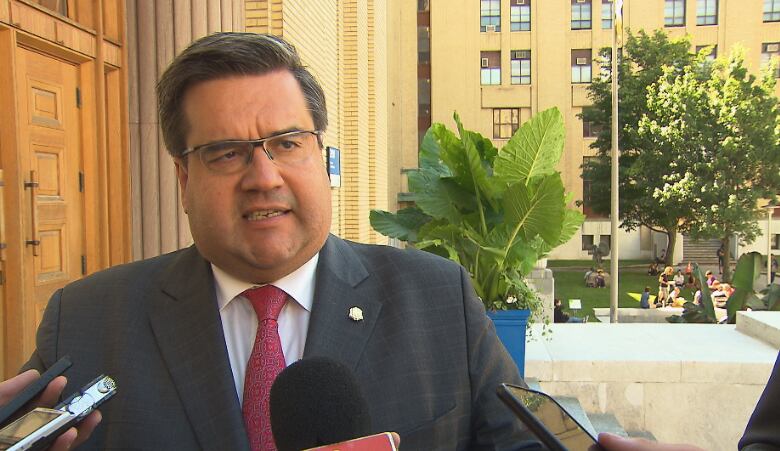Montreal boroughs to narrow streets to make them safer for cyclists
Reduce lane width, lower speed limit on arteries among proposed measures

In an effort to increase the safety of cycling, the mayors ofPlateau-Mont-RoyalandRosemontLaPetite-Patrieplan to narrow streets and reduce speed limits in their boroughs.
The move comes following a string of bicycle accidentsthis summer.Plateau-Mont-RoyalMayor LucFerrandez, who is also interim leader of the oppositionProjetMontral, said Tuesday"it's high time to act" on road safety.
Ferrandez said he hoped Montreal Mayor Denis Coderrewould join the borough's efforts and expand the safety measures available to cyclists.
ButCoderre, for his part, accused the opposition of "playing politics," saying the city was already putting together a coherentplan that would make the roads safer for all users.
"It's important not to just look at cyclists and pedestrians. We need to discuss with the trucking industry as well," Coderresaid.

Marc Cadieux, president of theQuebec TruckingAssociation, didn't approve of today's announcement.
"[Ferrandez]approaches things like a dictator rather than collaboratively,"Cadieux told CBC News.
He said that narrower lanes would make deliveries more challenging for trucksand that woulddrive up the cost of goods.
Cadieuxsaid cities with strong cycling communities have highly disciplined users, unlike what's seen in Montreal.
"Here we have a tendency to be aggressive rather than sharing streets," Cadieuxsaid.
The measures expectedto put in place by spring are:
- Reducingthe width of lanes on arteries from 3.5 metres to 3.2 metres. Right now some are as wide as 3.9 metres.
- Reducingthe speed limit on arteries to 40 km/h except in school zones where they are to remain 30 km/h.
- Movingthe stop line 3.5 metres back from stop lights on arteries so bikes will have a safe, visible space in front of cars.
- Take necessary measures to secure garage and alleyway entrances.
Marie-Eve Gagnon, aspokesperson for Projet Montral, said the boroughs are able to make these changes because things like repainting the lanes on their streets are considered signage changes, which are under the boroughs' control.
Boroughs, however, aren't able to make structural changes like adding bike paths to arteries.
"We were hoping the city would jump in with us," Gagnonsaid. "Our message today was let's collaborate on road safety."
with files from Simon Nakonechny












_(720p).jpg)


 OFFICIAL HD MUSIC VIDEO.jpg)
.jpg)



























































































